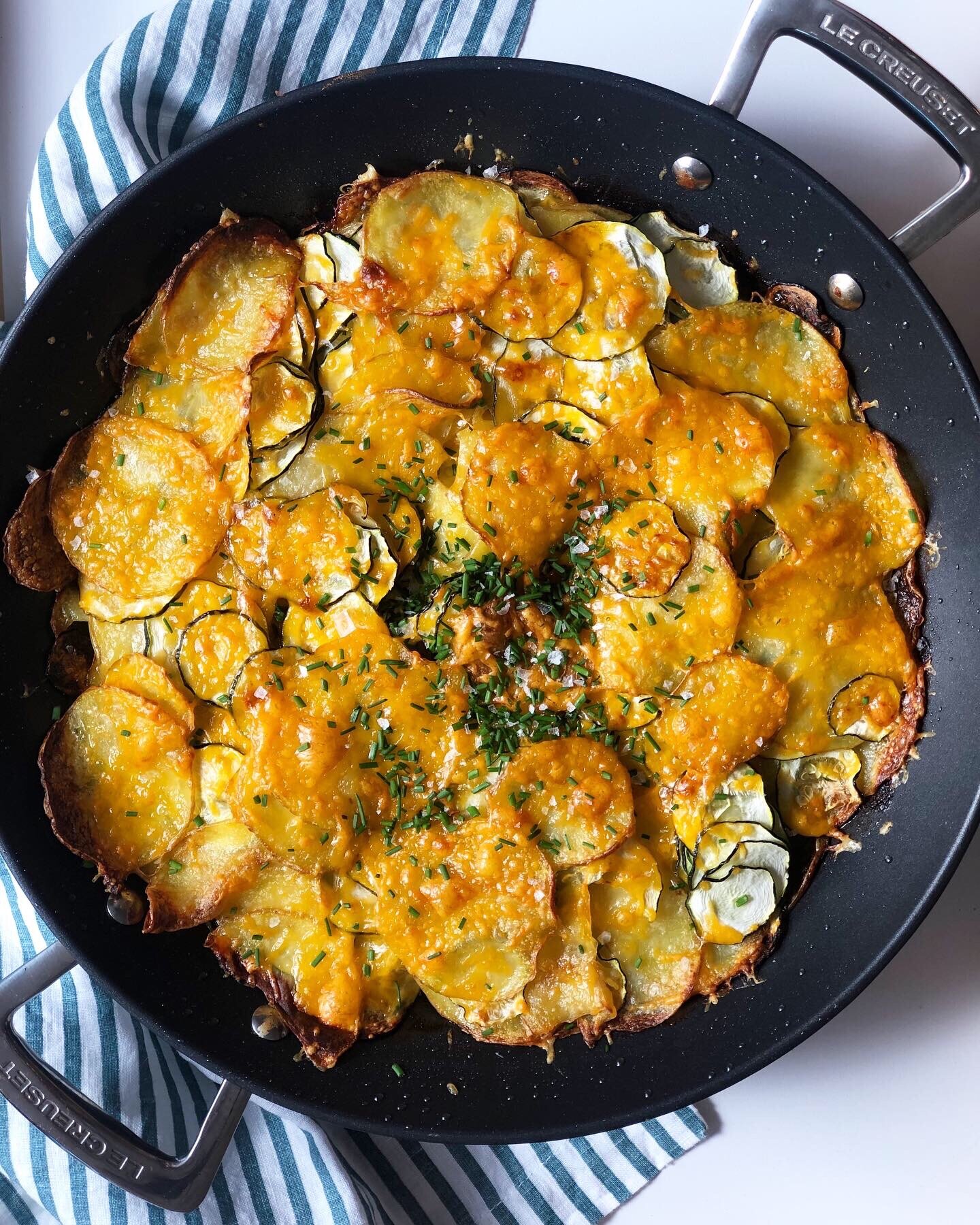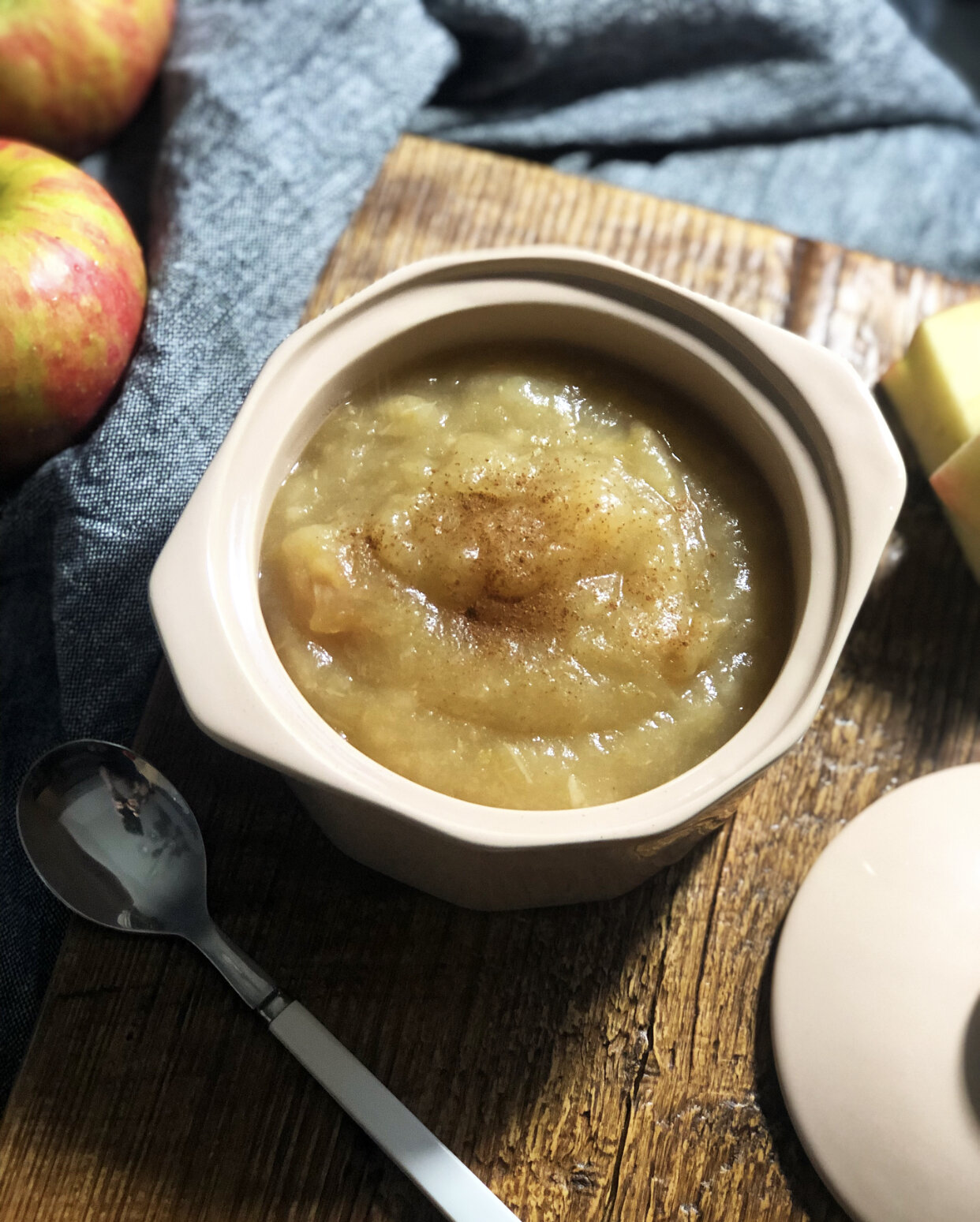Sustainable Cookware 101
Figuring out which cookware is sustainable, which is greenwashed and which is just plain hazardous is hard. In this post, I’ll give you my top tips for finding sustainable cookware and discuss the pros and cons of some popular cookware materials.
Basic Sustainable Cookware Tips
Used is best
When in doubt, buy something used. Plenty of pots and pans in thrift stores, on eBay and in your grandpa’s cupboard are waiting for their forever homes. Buying used cookware will save you money, cut back on waste and save the energy and resources needed to produce new cookware.
Avoid non-stick coatings
In terms of sustainability, pots and pans with non-stick coatings just aren’t worth your money. The worst part about these pans is that most of them are not made to last. Many non-stick pans are prone to getting scratched, losing their handles and, worst of all, losing their non-stick coating.
Some people also have concerns about the toxicity of non-stick coatings like PolyTetraFluoroEthylene (aka PTFE, aka Teflon). Before 2013, PTFE contained another chemical called Perfluorooctanoic Acid (PFOA), which was linked to killing pet birds and giving people flu-like symptoms for decades before.
Today, PTFE is more strictly regulated, so non-stick pans are most likely safe to use. However, since many non-stick pan companies ignored the toxicity concerns of their coating in the past, many are still skeptical about the safety of non-stick pans. Personally, given the short lifespan and potentially dangerous nature of non-stick pans, I prefer to stick to other cookware options.
Cast Iron
pros
long-lasting
Cast iron will last for generations if you treat it right (read: no scraping or hard scrubbing). Even chipped, scratched and rusted pans can be brought back to their former glory with a little work. When your cookware lasts longer, you won't have to replace it as often (or ever). This saves the energy and resources needed to make the cookware and saves you money. The long-lasting nature of cast-irons makes them one of the most, if not the most, sustainable cookware options.
non-stick (if seasoned properly)
If you season your cast iron pan regularly, you'll build up a non-stick surface over time. Having a non-stick surface will make your cooking a whole lot easier, with no scrubbing needed. If you need a tutorial on seasoning cast iron, check out my Guide to Cast Iron Care!
Oven safe
As long as your pan is 100% cast-iron (no plastic handle), it's safe to use on the stovetop and in the oven. This makes cast iron pans and dutch ovens super useful for baking pies, making frittatas, baking bread and more. Having versatile pots and pans is sustainable because you won't need to buy as much cookware to fulfill your needs. Less purchasing means less waste, fewer resources and less falling prey to capitalism.
Cons
Requires some maintenance
Every month or so, you'll need to season your cast iron cookware. The seasoning process usually takes about 1 hour, but the pan spends most of this time in the oven. Although this maintenance is minimal, it's more than many other cookware materials require. This seasoning process is enough to scare many people away from cast iron.
Not good for boiling
Boiling water in cast iron pots or pans can cause your hard-earned seasoning to fade or chip off. This means that cast iron cookware isn't flexible enough to be your only cookware. This lack of flexibility means you'll need to buy more products (using more energy and resources) to create a complete kitchen set.
Enameled cast iron
My enameled cast iron pan filled with my favorite summer dish
Pros
Non-stick
Enameled cast iron pans are non-stick without the health concerns or lack of durability of traditional non-stick coatings. This means you can cook and clean up with ease and don't need to waste time or elbow grease on cleanup.
Durable
Enameled cast iron can last for decades if you treat it carefully. If you avoid scratching and scrubbing, the enameled layer will hold up and the cookware won't wear down. This long lifetime means less wasted energy and resources.
Usually oven-proof
Most enameled cast iron pots and pans are oven-proof, so you don't need to buy a million pots and pans for different purposes. Having fewer pots and pans means you'll create less waste, spend less money and contribute less to production emissions.
Cons
Expensive
Enameled cast iron pans usually have scary-high price tags. Spending $100 on a frying pan is not possible for many people, so enameled cast iron is definitely not financially sustainable for everyone.
Enameled Layer Can Fade
Enameled cast iron pots and pans usually look shiny and are amazingly non-stick when they're new. However, after a decade or so of use (or only a few years of harsh scrubbing) they can lose this finish. Although professionals can restore the enameled layer, this is inconvenient and expensive. If the enamel layer fades, it could leave you with a less non-stick, more dingy-looking product.
Image credit Le Creuset
Stainless Steel
Pros
Oven-proof
Most stainless steel pans are made of 100% metal, so they can easily transfer to the oven. This means you can save the money, energy and resources that you would spend on other baking-specific cookware.
Durable
Stainless steel is almost indestructible. Stainless steel pans don't have non-stick coatings or enamel to worry about, so you can scrape to your heart's content. They can also withstand high heat and resist corrosion. This durability means that most aluminum pans can last 50 years, and some can last for several generations. The longevity of stainless steel means you won't have to replace your pots as often, saving resources, energy and money.
Fairly non-stick
If you use oil, most foods won't stick to stainless steel pans. Only delicate foods that are notorious for sticking, like eggs, fish or pancakes, might stick more than an average pan. However, you can scrub stainless steel pans a little harder than you would scrub coated or enameled pans because you don't need to worry about scraping off any protective coatings.
Cons
Not conductive
Cookware made with 100% stainless steel does not heat efficiently. Slow heating is not only frustrating, but it also leads to wasted energy because your food will need to spend longer on the stove. Some stainless steel pan manufacturers have added aluminum or copper cores to their cookware to make them more conductive. This solution fixes the heating problem but also makes the pans more expensive and slightly more vulnerable to wear and tear.
Anodized Aluminum
Image credit Rachael Ray Brand
Pros
Lightweight
Aluminum is a very lightweight material, which is great for storage, convenience and the environment. Lightweight aluminum pots and pans will require less fuel during transportation, especially compared to cast iron, ceramic or cast aluminum cookware. Since the transportation industry is a heavy polluter of air, land and water, this is a win.
Conductive
Anodized aluminum is mega conductive, so you won't need to wait around for your pan to heat up. This quick heating not only saves you time but also saves energy and emissions.
Cons
Short Lifespan
Anodized aluminum pots and pans can typically only last up to 10 years. Although aluminum pans are more durable than many traditional non-stick pans, they are no match for stainless steel or cast iron. These pans can be scratched or worn out quickly, wasting your money along with energy and resources.
Aluminum mining is intense
Mining aluminum is an energy- and resource-intensive process. To create aluminum, manufacturers have to first mine for bauxite in open mines. These mines require clearing major amounts of land, and have been linked to deforestation. After the bauxite is mined, it has to be refined, heated and treated to create aluminum. This process requires many more resources and much more energy than the processes for procuring iron, steel or ceramic.
Cast Aluminum
My grandma’s old cast aluminum pan
Pros
Long lifespan
Cast aluminum is much more durable than anodized aluminum and can last for generations. Anecdotally, my grandma gifted me some of her old cast aluminum pots and pans and they are still going strong. Cast aluminum’s long lifespan leads to less waste, less energy-use and fewer resources.
Ovenproof
Most cast aluminum pots and pans are oven proof, so you can use them for multiple cooking and baking needs. With this flexibility, you can buy fewer pots and pans. Fewer pots and pans means less waste, less production energy and resources, and more space in your kitchen.
Cons
Questions about Aluminum safety
A study from the late 1900s suggested a connection between aluminum and Alzheimer's disease. Since then, other studies have found that people exposed to higher levels of aluminum do not have an increased risk of Alzheimer's. However, some are still concerned about the potential link between aluminum and Alzheimer's, so they steer clear.
Aluminum mining concerns
Like I discussed above, mining aluminum is energy- and resources-intensive. These characteristics are major sustainability no-nos.
My tiny ceramic baking dish (feat. homemade applesauce)
Ceramic
Pros
Oven-proof
if your cookware is 100% ceramic, it is oven-proof. This means that you can buy fewer cookware pieces, leading to less wasted energy and resources (not to mention more room in your kitchen).
Fairly non-stick
Ceramic pots and pans do not have a non-stick coating, but if you use oil and avoid adding foods to a cold pan, you don't need to worry about sticking. Even if some food gets stuck on, you can scrub to your heart's content since ceramic is quite scratch resistant.
Long lifespan
If you are careful not to chip or break your ceramic, it can last for generations. With long-lasting cookware, you will never need to worry about buying cookware again and you'll avoid excessive greenhouse gas emissions and resources from manufacturing.
Cons
Can break or chip easily
We've all seen a sad, chipped ceramic baking dish. Depending on where these chips occur, they can range from being aesthetically unpleasant to potentially dangerous. If the chip is in the inside of the dish, ceramic shards could get in your food, which is obviously a major yikes. The potential for breakage means that ceramic pots and pans could last for shorter than you were hoping.
Not conductive
Like stainless steel, ceramic is not a conductive material, so ceramic baking dishes often take a while to heat up. This wastes precious time and energy and costs you more money on your electricity or gas bill.






